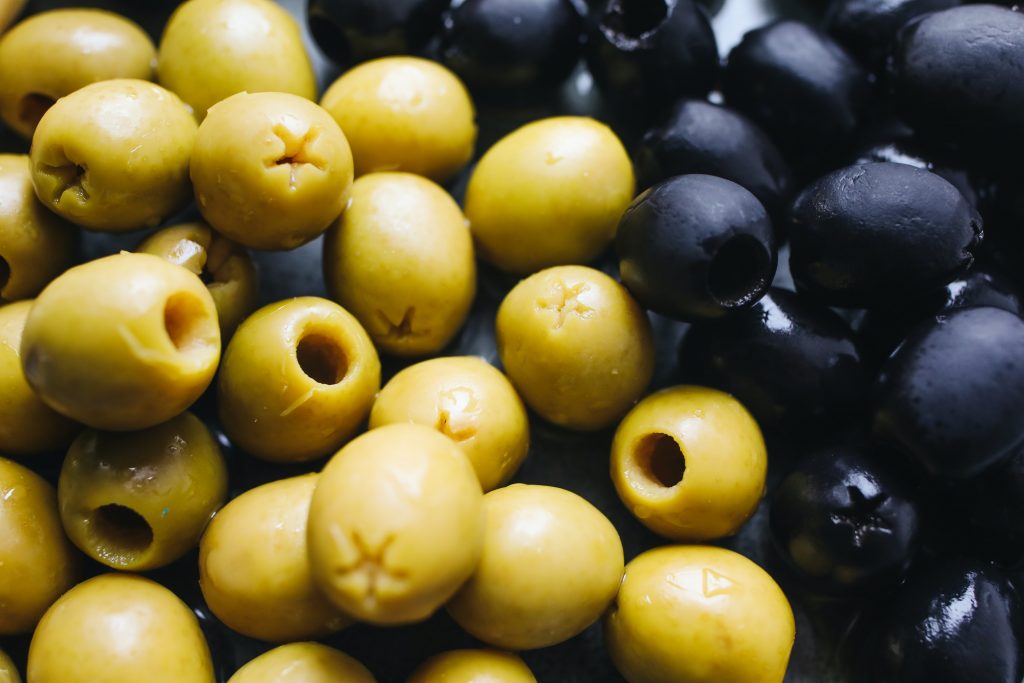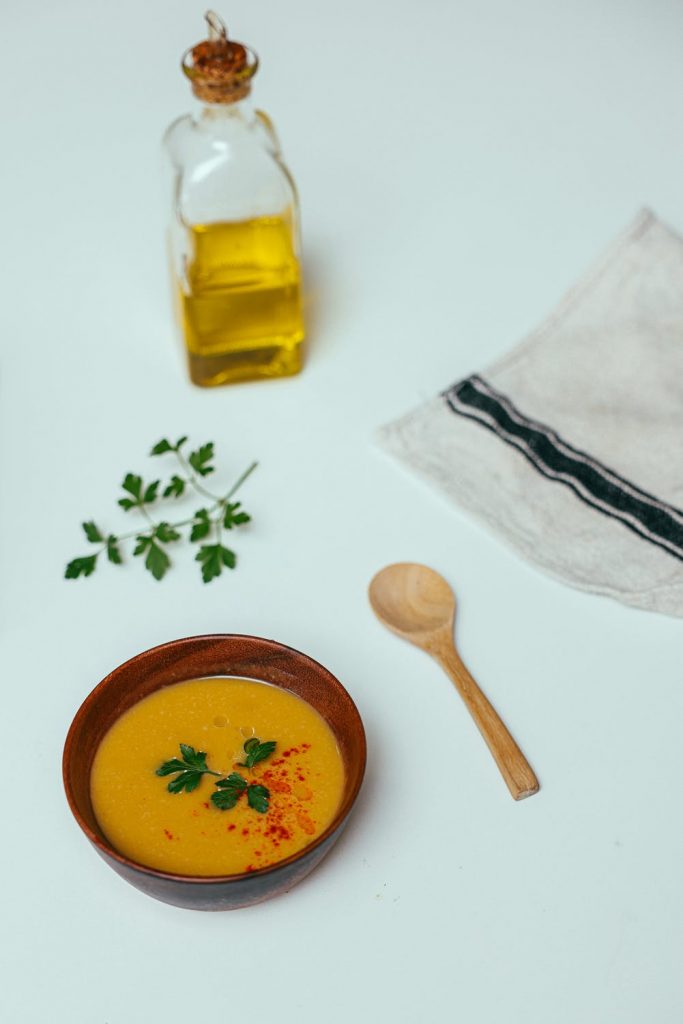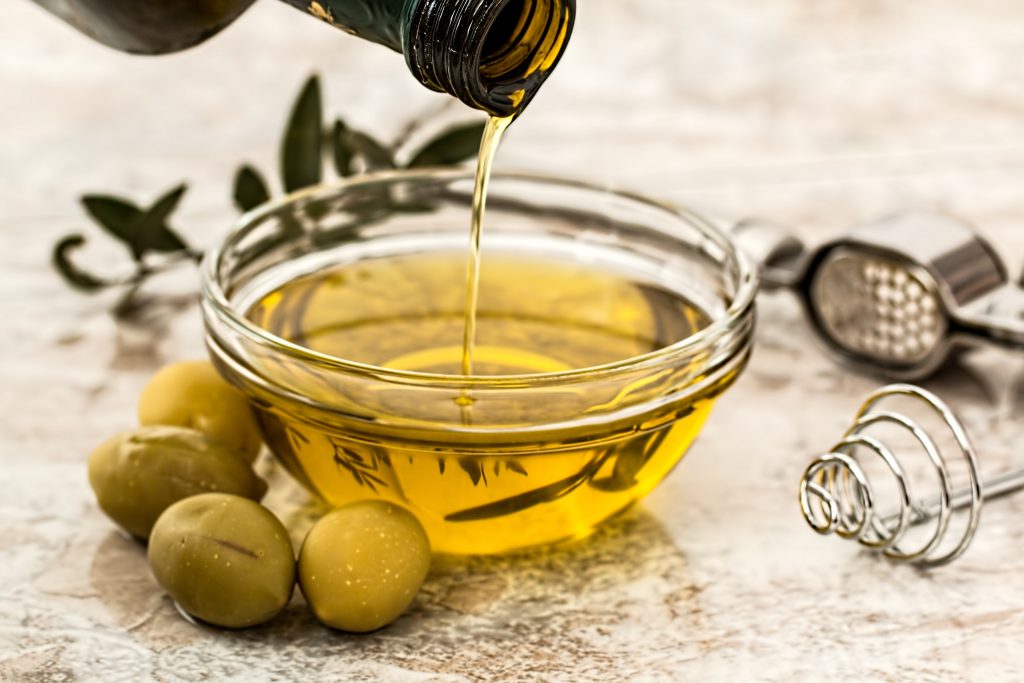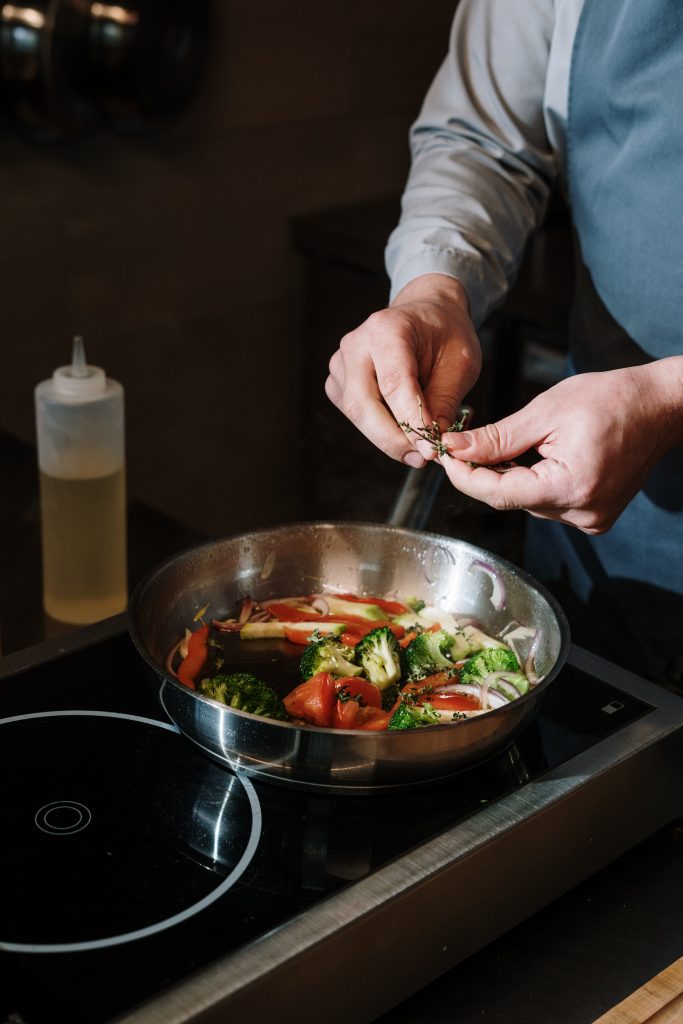Everything You Need to Know to Choose the Olive Oil Right for You
Have you ever wondered what the big deal is about olive oil? Why some people prefer it over butter? And, what are the health benefits that make it such a popular choice? Well, olive oil is rich in the polyunsaturated fat called oleic acid, which reduces inflammation, promotes better circulation, reduces the risks of type 2 diabetes and might fight cancer. This is just one of the many amazing healthy benefits of olive oil, or “liquid gold” as it is sometimes called. The oil has been a staple of Mediterranean cuisine for centuries because of its rich palette of flavors and aromas.
The flavors primarily fall into two major categories: grassy and floral, and sometimes buttery. Grassy olive oils tend to have flavor notes of vegetables like, artichokes, asparagus, almond, cucumber, tomato leaves, green apples, etc. Floral oils carry notes of citrus, flowers and fruit like pears. Both types, regardless of bitterness or sweetness, generate a flavor that’s unique, velvety smooth and compatible with many other foods.
Olives are grown on trees, called olive trees. The olive tree has been revered and the fruit used since at least 3500 B.C. The oil was used in religious ceremonies, lamp lighting and cooking. One ancient Hebrew law that prohibited destroying any olive tree is still followed by some people today.
Table of Contents
Where Is Olive Oil From?
Most olive oil comes from the Mediterranean Basin, which includes Greece, Italy, Turkey, Spain, Portugal, and Tunisia. Olives grow on trees, and they rank high among the core food plants that feed people in this region and all over the world through exports. This delicious ingredient is manufactured in the five leading countries already mentioned, those countries around the Mediterranean Basin, but California in the United States, various countries in South America and Australia also produce significant amounts of the product. Other states and countries are rapidly trying to start fledgling industries, and any of these operations could achieve the success that California has had in muscling in on France’s time-tested reputation for wine.
The core foods of the region include olives, grapes and wheat, and the regional cuisine features olives and olive oil prominently. Olive oil is pressed from the olives that grow throughout the region and used in cosmetics, foods, pharmaceuticals, salad dressings and sauté pans. This oil is actually a liquid fat at room temperature that’s obtained from the fruit of the olive tree, also known as Olea europaea.
What Are the Types of Olive Oil?
According to the International Olive Oil Council, there are five main types of olive oil:
Extra Virgin Olive Oil
Made from the first pressing of the olives, EVOO has less than 0.8 grams of acidity per 100 grams. The high quality and minimal processing delivers the freshest and most natural product, which is loaded with healthy antioxidants, vitamin E and phytosterols.
Virgin Olive Oil
Virgin olive oil is manufactured in the same way as EVOO, but the oil is of a lower quality because of the olives used. The acid might rise as high as 2.0 grams per 100 grams.
Lampante Olive Oil
The oil is adulterated by adding hot water to further extract oil from the olive paste. The quality makes it unsuitable for human consumption, and the acid rises higher than 2.0 grams per 100 grams.
Refined Olive Oil
Lampante oil is refined to deodorize the oil and remove some of the acidity. Refined olive oil should have an acidity no higher than 3.0 grams per 100 grams.
Olive Oil
Products labeled simply “Olive Oil” combine natural olive oils and refined olive oil to get a weak version of the product that’s suitable for eating and cooking. The acid is limited to 1.0 grams of acid per 100 grams of oil.
You might come across something labeled “pomace oil” but you should avoid this product because it’s made from chemical solvents and leftover pulp. Nothing is left of what makes olive oil attractive, and the mislabeling has generated controversy in many countries like Britain and Spain.
What Are the Health Benefits of Olive Oil?
- Cooking with olive oil helps to lower cholesterol.
- It is low in monounsaturated fats.
- It helps your body absorb other key nutrients such as Vitamin C and D.
How Do Brands Differ?
Like fine grapes or honey, each brand carries a unique flavor and aroma profile that consumers can compare to their taste preferences like wine. That’s because the composition of the oil varies widely based on the number of fatty acids, minerals in the soil, amount of rain and sun the olive trees receive and other subtle factors involved in the extraction process.
How Is Olive Oil Made?
You can view this video on how this oil is made. The basics of the extraction process follow this procedure, and most oil producers follow these steps:
- Collecting and Grading the Harvest
The first step is harvesting the olives from the trees where they are picked over manually to weed out damaged, unappealing olives. The olives are separated into different categories based on the degree of ripeness, size and quality. The lives chosen for olive oil are stored for a few hours up to several days to allow them to warm naturally without fermenting. Warm olives release oil more readily. - Washing and Milling
The harvested olives are rinsed with cold water and placed on a conveyor belt, which passes the olives along a series of rollers and hammers that pit and crush the olives. Sometimes, it takes a second run the break down the olives enough to create a paste. - Making an Olive Paste
In ancient times, people used a mortar and pestle to transform the chopped olives into a paste. Eventually, the process was refined to mashing the olives against stone mortars by animals or slaves. Today, he olives are fed into vats where slowly turning blades convert the olives into a homogenous paste. - The Cold-pressing Process
The cold-pressing process is performed with a hydraulic press after the paste has been spread over hemp-pressing bags, and 25-50 bags weighing between nine and 13 pounds are placed on each pressing plate. Pistons press against the bags and force the oil to filter through the bags.
The first cold-pressing extracts what is known as extra virgin olive oil, which is considered to be of the best quality. EVOO is used in dipping sauces for bread, salad dressings and finishing touches on food that’s been cooked. The oil has a peppery or pungent flavor and is rich in antioxidants, and it complements foods with flavor complexities.
The technique is called cold pressing because the paste isn’t heated, which makes for a fresher, unadulterated flavor. The mash develops a reddish color as it contains a mixture of oil and vegetable water. - Separating the Oil from Vegetable Water
The oil and water were stored in vats originally until the oil floated to the top, and it was pumped away from the water. However, that resulted in unwanted fermentation, which affected the flavor, aroma and appearance of the extracted oil. That’s why companies now use centrifuges to separate the oil and water. - Packaging and Storing the Oil
The extracted oil is stored in cool underground vats until it is ready for shipping. Usually the oil is piped into cans and bottles on the assembly line.Most companies prefer to use dark bottles that preserve the green color of the best olive oil. Lighter colored glass bottles result in the color changing to a yellowish-green. - Quality Control Considerations
The industry is regulated by governmental agencies that include the FDA in the United States, which classifies olive oil into five categories:- Virgin – cold-pressed oil
- Pure – a mixture of virgin and refined olive oil
- Refined – low-grade lampante oil that has been heated and processed to remove color, aroma and acids
- Lampante – a highly acidic type of olive oil, which was originally used as lamp oil
- Sulfide – an olive oil derivative where the oil is extracted by using multiple chemical solvents
- Many companies spend lots of resources on packaging to make the bottles attractive, likening the production to owning a vintage wine. The oil is best when used within two years of its bottling date. Keeping the oil fresh depends on four major factors: time, limited exposure to light, storage temperature and limited exposure to oxygen. That’s why most manufacturers recommend finishing an opened bottle within 3 to 6 months.
What Is the Best Olive Oil?
Choosing the best variety depends on its use. Some lower quality oils are suitable for cooking large quantities of fried foods, similar to vegetable oil, and some oils can be used in lamps and industrial processes.
Most experts recommend choosing a boutique (small batch) oil that represents long-established extraction operations of the boutique variety. That’s primarily for making salad dressings, creating a winning pesto sauce and finishing pasta dishes and soups. However, you can choose lower quality refined oil for frying, especially when cooking in large quantities. These will generally have a lower smoke point which helps in preserving the flavor of the food.
Like any product, the final answer depends on your personal preferences. You might prefer a grassy or floral olive oil, or your flavor preference might follow the oils of a particular country or region. In general, olives grow best in poorly aerated soil of sand and limestone and in conditions where the winters are rainy and the summers dry and hot.
Tips for Choosing a Brand
The best tips for buying good a olive oil should include information about storing it to prevent deterioration of the product caused by exposure to air, light and oxygen. It’s also helpful to check for the harvest date and ensure that it is not too far back. The following tips can help you make the most of your olive oil:
- Unless you’re a commercial company trying to lower food costs, it’s best to choose an extra virgin olive oil for finishing foods and cooking because extra virgin oils hold up fine for host home cooking.
- If you buy an imported oil, try to determine the harvest and “use by” dates.
- Unlike wine, olive oil doesn’t improve with age.
- Speed up your consumption of a bottle of olive oil by making a dipping sauce for bread, drizzling oil on a baked potato or making a unique balsamic vinegar and olive oil dressing.
- Keep bottles of olive oil in cool, dark places to retain freshness.
- Choose opaque or dark colored bottles to prevent excess exposure to light.
- Always tighten the caps on your olive oil.
- EVOO remains stable up to temperature of 420 degrees Fahrenheit, so use it in all your cooking and savory baked dishes.
- Buy olive oil only from trusted retailers or known manufacturers with a reputation for quality.
Excellent Recommendations
Scouring multiple sources, the following recommendations might guide you in the process of choosing an olive oil.
Tenuta Di Capezzana
This is an outstanding choice that’s great for finishing gourmet dishes with a refreshing drizzle of EVOO. The oil is well-balanced between fruity and complex bitter flavors.
EVOO an be used straight up as a dip for bread in lieu of butter. You can also finish your favorite dishes with a drizzle of EVOO or use the oil as the primary ingredient in a fine pesto. You can flavor your dipping oil with your desired herbs and spices that might include basil, thyme, oregano, garlic, salt, cracked black pepper, cayenne pepper and red pepper flakes.
California Olive Ranch EVOO
This is a great California olive oil for all-round cooking because it’s affordable and available in three flavors. It’s great for cooking, finishing and making signature vinaigrette dressing for salad, vegetables and pickled items.
EVOO Recipe
EVOO works especially well for roasting or grilling vegetables. Just coat the vegetables with a light coating of EVOO sprinkles with salt or your favorite herbs and roast at 400 degrees for 20 to 40 minutes, turning the vegetables after two-thirds of the cooking time. If grilling, grill to desired doneness and caramelization on each side.
Which is Best for Cooking?
As previously mentioned, it’s best to choose a high-quality EVOO or virgin olive oil for cooking. You should choose an oil for cooking based on one that you like for its raw flavor. It’s like wine — you should never cook with wine that you wouldn’t drink. The same holds true for not choosing an oil that you wouldn’t use for salad dressing or finishing dishes.
Spanish Olive Oils
Spanish EVOOs and VOOs are excellent for both raw and cooked foods, and you can use almost any cooking technique with olive oil. Of course, using raw oil compliments salads and adds the perfect finish to a pasta dish or pizza. However, you can use this oil in a variety of cooking techniques that include:
- Emulsifying: Using olive oil to emulsify or thicken a sauce
- Smoking: Adding olive oil, especially Spanish EVOOs, to enhance the smoking process and add its own smoky complexities to food
- Frying and Sauteing: Submerging food into hot oil or gently cooking over low heat to sauté
- Stir-frying: Cooking at high temperature for a relatively short time
- Marinating: Submerging food in seasoned olive oil and soaking it for greater flavor and tenderness
EVOO or VOO Recipe
You can use virgin olive oil in this recipe for aioli, also known as garlic mayonnaise. When I make this recipe, I cut a garlic bulb in half, and rub the surfaces with the oil. I then roast a garlic, cut side down, at 350-degree Fahrenheit for 30 to 40 minutes. I use about one-third of the roasted garlic for the recipe, and reserve the rest to flavor your favorite foods. I then mash the garlic, stir in two egg yolks and 4 teaspoons of lemon juice. Next, I whip until thick and creamy, then begin adding ¾ cup of EVOO or VOO a few drops at a time at first. As the sauce begins to emulsify, you can add increasingly more oil, which is what I like to do.
Baked Goods
You can use EVOO in baked breads and other savory dishes, but did you know that many people enjoy this flavor in sweet baked goods? Most people choose a floral variety because the fruity taste complements sweet pastries, cakes and pies. Spain features pure oils with floral profiles, but chefs who like savory recipes might prefer an Italian variety because they generally feature a grassy flavor profile.
EVOO Recipe
You can substitute EVOO or VOO for oil or butter in almost any baking recipe. Use a 3:4 ratio of oil to butter or an equal amount when replacing another oil. Delicate oils work best — such as Arbequina. However, you can use a stronger variety when mixing it with strong chocolate. Don’t substitute for the butter in recipes where whipped butter provides part of the rising process.
Finding Your Sweet Spot with Olive Oil
You’ll get the hang of buying the right high quality olive oil in no time if you expand your cooking with it to use up your supply. Fortunately, tasting and falling in love with a brand is the right way to choose your favorite. You might discover different favorites for different dishes. Ideally, you should keep a spare bottle that you don’t open until you’ve used all of the first bottle. The oil will keep longer when not exposed to light, heat or oxygen.
















































